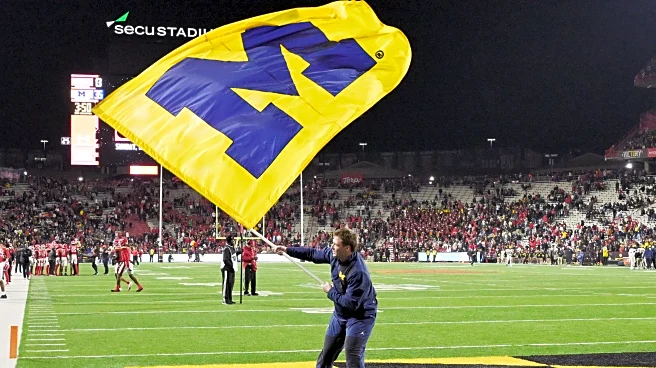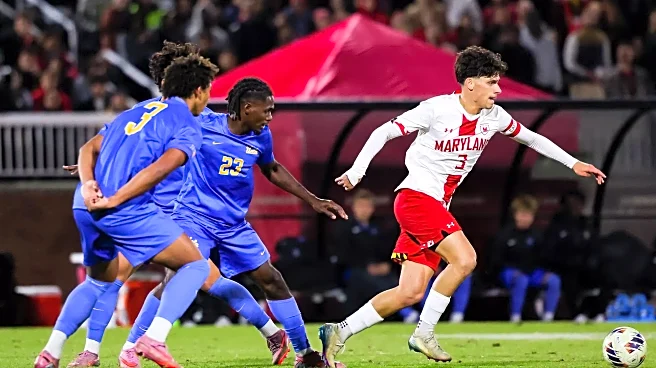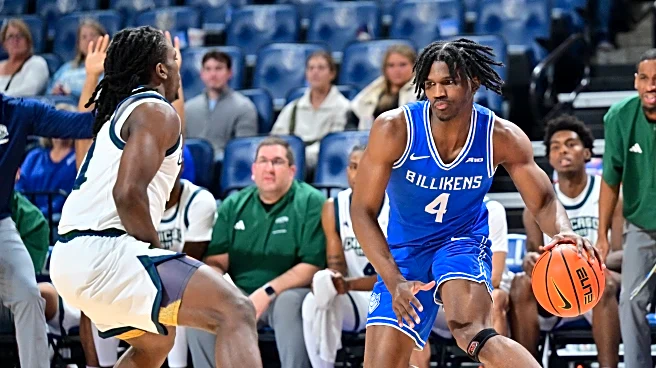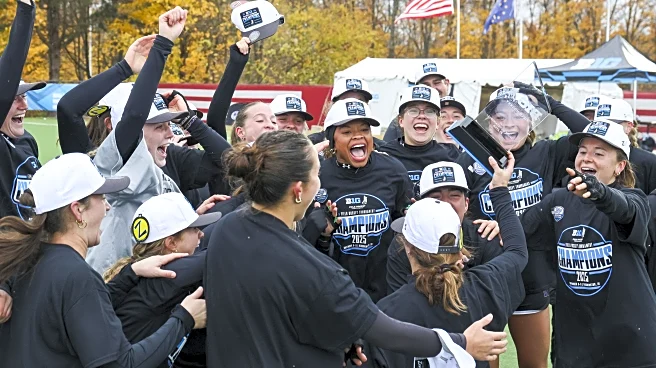Maryland men’s soccer’s path to perfection was never going to be straightforward.
While the Terps made it look easy during the regular season — they trailed for just 78 seconds en route to a Big Ten title
— resistance was expected to come at some point. Maryland’s conference tournament matchup against UCLA provided that.
Against a Bruins’ squad fighting for their postseason lives, the Terps showed their first sign of imperfection. After holding UCLA scoreless for 163 minutes dating back to its regular season meeting, Maryland conceded a pair of goals within the blink of an eye.
“We hadn’t really had to chase a game late so that’s something you have to be ready to do,” head coach Sasho Cirovski said. “It’s quite incredible to be down only 78 seconds over the course of a college season. I think that’s maybe one of the blessings that forces us to be prepared in case we were in that situation again.”
The Terps couldn’t recover. Despite the pieces in place for Maryland to lift the trophy — hosting the Big Ten Tournament and a 15-game unbeaten run — the Terps suffered their first loss of the year in front of a packed Ludwig crowd.
But that defeat has a positive spin. Unbeaten seasons in college soccer are a rarity. Even the most dominant teams are bound to have an off day.
Take the 2016 Maryland team, for example. Outside of two early-season draws, the Terps looked untouchable. Maryland entered the NCAA Tournament on a 15-game winning streak and without a loss in its 20 matches.
The top-ranked Terps even took a three-goal lead against unseeded Providence just after halftime. Then, it spiraled out of control. Four scores within 12 minutes pushed Maryland into scramble mode to find a late equalizer. The Terps never found it, abruptly ending their promising season in the second round.
That result fits the historical trend. Over the last three decades, 23 teams have reached the NCAA Tournament without a loss. None of those teams have gone on to win the national championship.
“It’s a real challenge to go undefeated all the way through,” Cirovski said. “Sometimes in winning with young college players, you can get a little complacent in certain aspects of the game.”

Over half of those teams have lost in either the first or second round. While a half dozen were unseeded, three top-seeds — Maryland, Duke and Vermont this year — suffered a similar fate in their respective second-round contests.
It’s been 36 years since the last time an undefeated team hoisted the national title, and even that year has an asterisk next to its name. Santa Clara (20-0-3) was crowned co-champions with Virginia (21-2-2) in 1989 after a winner couldn’t be decided in 150 minutes of action.
Since then, college soccer has endured a long spell of parity. Teams often beat up on each other throughout the regular season, resulting in fewer unbeaten records.
Instead, one-loss teams have had more success. Three such teams have lifted the national championship trophy, with Georgetown in 2019 the most recent example. The Hoyas needed a penalty kick shootout to escape with the victory.
But if there’s anything Sunday’s NCAA Tournament slate proved, it’s that records and rankings get tossed out the window in the postseason. Six of the top-9 seeds all were eliminated, with Maryland, No. 7 Georgetown and No. 8 Portland remaining.
While the pressure is back on Maryland, it doesn’t have history on its side. Since the NCAA Tournament expanded to 48 teams in 2003, no No. 4-seed has won it all.
However, the Terps have thrived when they’ve been doubted. Maryland didn’t crack the United Soccer Coaches poll top-25 until the fifth week of the season, and even then, its 5-0-1 record suggested it should be ranked higher.
Despite finishing with seventh-best RPI in the country, the Terps earned the No. 4-seed in the NCAA Tournament. Five ranked wins likely boosted Maryland’s resume enough to overcome its Big Ten Tournament semifinal loss.
Besides the historical data to suggest it’s hard to finish unbeaten, the Terps’ defeat appears, in hindsight, a good thing.
Fatigue plagued Maryland in that 2-0 loss, with Sasho Cirovski opting to shrink the rotation. Freshmen Rocket Ritarita and Farouk Cisse were the only players off the bench to see much action, and the duo only combined for 40 minutes.
While Cirovski has talked about the depth of this year’s team often, it will be interesting to see how far into the bench he goes throughout the NCAA Tournament.
Despite playing 110 minutes against North Carolina on Sunday, only 16 players saw the pitch. Ritarita’s goal and Jace Clark’s assist highlight the contributions from the Terps’ bench in the second round contest.
Still, one game across 16 days will likely keep Maryland refreshed enough to recover from its grueling shootout thriller. That stretch included a 10-day period between the Terps’ Big Ten Tournament game and their second-round contest.
Maryland’s longest stretch of the season without a match heading into the NCAA Tournament allowed some of its players to heal up. Clark suffered an injury against UCLA and was forced off the pitch for the remainder of the game. Other players had been battling lingering knocks.
“We’ve taken that loss in the semifinals as a blessing to reignite the hunger, and refresh the bodies and minds,” Cirovski said. “Now, we are just eager to play.”
That hunger and eagerness will remain on display in Maryland’s third-round contest against No. 13 UConn on Saturday. In what is likely going to be a packed crowd, the Terps will use the home crowd to their advantage.
“I’m coming from the University of Charleston, and we’ve had home-field advantage for two years straight,” Tristen Rose said. “Last year, we got to the national final, and I think a lot of that had to do with hosting all the way to the final four.”












